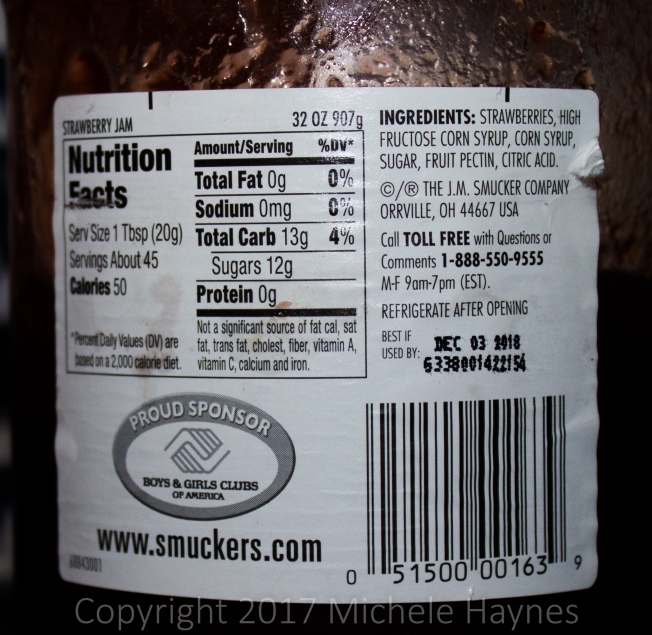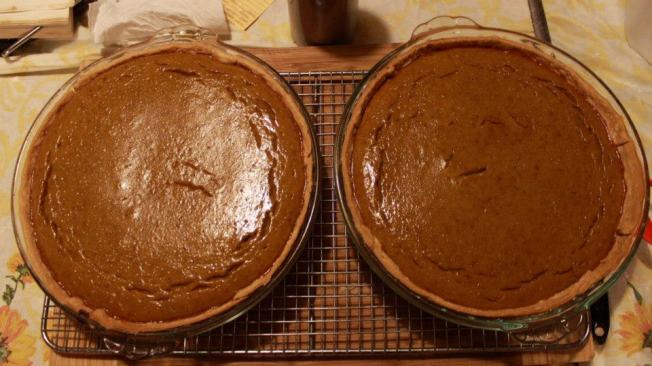
This is what I am moving toward: my family, grandchildren especially.
I looked at my list of posts over the past year and was tickled to see a post about Monarch butterflies followed by my getting-ready-to-move post. Disconnected? I think not.
Both posts are about migration and survival.
My last post I was packing in preparation for my move from Connecticut to Texas. That certainly qualifies as a migration, and not in preparation for winter, metaphorical or seasonal.
This post is about the move itself.
Day 1
I picked up the 16-foot Budget moving truck at 11 a.m. on Friday, July 14th. My plan was to load up the truck and leave the following morning.
Oh, the plans of mice and men–of mice and men.
I arrived home to find no one working, no one packing, no one accomplishing anything necessary to achieving my goal of leaving the next morning.
I took a few deep breaths and began to engage each son, explaining what I would like to see done and why. I always include the why when engaging my children, grown or not.
I realize now that I handled the move entirely wrong. Hindsight and all that.
Needless to say, we (yes, they finally kicked into gear) continued packing while my moving truck sat empty at the top of the driveway. It remained there overnight. I tried not to cry.
Day 2
Saturday morning dawned, filled with bird songs and cries, sunshine and fluffy clouds. It was a perfect day to begin our journey.
And then I looked around and realized there were only a handful of boxes completely packed, sealed and labeled. The kitchen was not packed.
I had tried to sell as much stuff as I could at a 3-day tag sale. Very little interest and less than $100 made, I now had all that stuff there that needed to be dealt with (dump and Goodwill).
I don’t remember what time the boys finally woke up and began to pack. It wasn’t early.
It was on this day that I got an answer to the question: “Are you going with us to Texas?”
I had been asking my 21-year-old son this for weeks with no answer. I mean not even his typical grunt was forthcoming. He didn’t know.
Suddenly, he was coming with us. He had not assisted us in any significant way prior to this point. I was nearly pulling my hair out.
Now I had one more person’s belongings to accommodate on the truck and my storage unit (which I already rented – my daughter picked up the keys for me that week).
If nothing else, I am a mom. I would never leave one of my children if I could help them be where they wanted to be. And I certainly knew that Texas, specifically Austin, was where this computer programmer, game developing musician needed to be. Of course, he could come with us.
And suddenly things were happening. It was like the trip itself had been holding its breath, waiting for my 21-year-old to commit to the move.
The floodgates opened and stuff flew into boxes, got loaded onto the truck, and progress was being made.
However, not enough got done to leave on Saturday. I announced that I had canceled our hotel reservations for the next two days and replanned our trip for a Sunday departure.
Everyone stopped working and called it a day; not what I wanted.
I was exhausted; I was beyond exhausted. I took two naproxen for pain and called it a night.
Day 3
I had been waking up around 4:30 a.m. the last three days, and this day was no exception. I can get a lot done in the early morning hours. So I did.
Packed boxes were everywhere. Many household items had made it out to the truck in the evening prior, much that had to be unloaded before we could begin seriously loading the truck properly. Yes, there is a right way to load a moving truck, and I had to supervise closely while still trying to pack and supervise the boys packing. I was exhausted by 10 a.m.
Around this time my 27-year-old son arrived to pick up the house and pickup truck keys and discuss caring for the house until his father decided to engage (my estranged husband was giving everyone the silent treatment, refusing to answer the phone or discuss me and our sons leaving for Texas). I had asked one of my son’s friends to help care for the house, to house sit even which he agreed to do.
The second set of floodgates opened and the move was happening.
I knew that the house would be cared for, cleaning would get done, and projects dealt with. I offered money and money talks (even though I don’t have money for such things – you do what you have to do).
Approaching noon, the truck was finally loaded. The cars were loaded with computers and other items that were deemed too delicate to go on the truck. When I drove the truck up the driveway to get it out of the way so the pickup could get back to work hauling stuff off (driven by friend), I realized that the tag sale stuff was still there. Sigh.
I told the boys that we weren’t leaving until everything we weren’t taking was either hauled to the dump or stowed in the workshop and/or garage. We were not leaving a mess (of course not).
An hour later, we were ready. Actually ready!!!
I nearly cried when we pulled out, our caravan of moving truck and two cars.
It took me years to get this move started. I had asked my estranged husband to help me move, to help me sell our house, to help me be near my elderly, very sick mother and he refused. Keeping me in Connecticut was his last bit of control over me. Cutting me off from our finances hadn’t brought me back to him. Forcing me to live in poverty hadn’t brought me back to him. Ignoring me hadn’t brought me back to him. Tough love just didn’t work, because I was not a drug-addicted, rebellious child. I was his equal partner in a marriage that had started out with great potential. Control and abuse destroyed it.
But this day, Sunday, July 15, 2017, I drove away from my prison, declaring that I was free.
We drove across Connecticut to New York and I celebrated.
We drove through Pennsylvania, Maryland, West Virginia, Virginia and Tennessee that first day. We drove for 8 long hours, arriving at our first destination after 10 p.m.
We all crashed, exhausted, but not before a celebratory drink or two. We were far, far away from Connecticut and closer to our destination.
Days 4, 5 and 6
The following days we drove as long as I could handle driving. When I arrived at a hotel where I thought I had a reservation, the lovely clerk made sure we had a room. I found everyone I met along the way was helpful and kind.
Each day we would arrive at our hotel, my legs would be so swollen I could barely walk. I would spend the next few hours drinking Mullein leaf tea with my legs elevated so that my legs would not sustain permanent damage. This trip was not easy for me physically. But it was not going to kill me, so we drove and drove.
I drove the moving truck every single mile. My sons were reluctant to drive it, so I did. I actually enjoyed that truck a bit, being up high, being treated kindly by truckers hauling all the stuff that Americans need to live and enjoy life. The roads were crowded, but most drivers were courteous.
Day 7
Thursday, July 20, 2017, we lazily awakened in our Holiday Inn located in Livingston, Louisiana (very nice place). We were less than 5 hours from our final destination.
I had been trying to figure out how to time unloading the truck into the storage unit and where to park the moving truck overnight. My storage unit manager said I could not leave it there. I couldn’t reach the drop-off facility manager. It was stressful. My contract stated that I could not drop off the truck after hours (which turned out to be untrue).
I had this whole dilemma at the back of my mind as we drove the last miles to Houston. When we crossed over into Texas, I texted my daughter.
“Welcome home!” she texted back. I cried tears of joy.
And just typing those words makes me cry with joy, with relief.
We had picked up four two-way radios in northern Alabama (I think that’s where it was). So we chattered back and forth between cars. When we stopped for gas about an hour away, I told them that the sky looks different in Texas. They didn’t believe me, but I stand by that.
Politics aside (please ignore Texas politics—pols here have all gone insane), Texas is a beautiful, crazy, fun, full-of-life place to live. It is never boring. Never.
That big sky. Oh, that big sky.
We arrived in Houston and drove for about 30 minutes to my storage unit where my daughter and granddaughter were waiting for us. Lots of hugs. So many hugs. I exclaimed over and over how happy I was to finally be in Houston. My granddaughter was happy as always. She is always happy.
I admit the unloading was tortuous. I didn’t do much because I couldn’t. It was crazy hot and humid. My sons were melting. But they did it.
And then I got a brilliant idea. I would just park the moving truck in front of the drop-off location and leave a note that I would be there first thing in the morning to check it in. I left my lock on the back and took the keys with me. Haha! A whole ‘nother story, but it worked out fine. The grizzled, old facility manager and I bonded the next morning after he told me he thought I was just some stupid Yankee for leaving the truck without dropping the keys in the drop box (yeah, I could have dropped it off after hours). So funny!
I called my mom and let her know that we had arrived and that I planned to drive to Austin Saturday to spend the weekend with her and my stepdad.
I emailed a couple of people that we reached our destination safely. I breathed a huge sigh of relief and fell asleep soundly on my inflatable mattress in my granddaughter’s room (she loves that I sleep in her room).
This part of my journey is over. I am without a place of my own right now, but I am welcome in my daughter’s home and my mom’s home. They love me and embrace me. That is what I have yearned for all those years I was being held prisoner in Connecticut (I held myself prisoner as well by trying to do what was right by the house, the property, be responsible and I did have a teenager in high school there).
Update: July 25, 2017
My mom found out yesterday afternoon that she has late-stage cancer. I am devastated. I will be here for her, though. We will walk this path together. And this is why I felt an urgency to get to Texas.
__________________________________________________________________________________________
Special thanks
I want to thank my friend, Charlotte Gelston. She has been my greatest inspiration and the one who told me to just pack up and go. Stop worrying about the house. Just go. So I did.
Charlotte is a woman of God who knows how to show the love of God. It isn’t religion to her; she believes her very life is meant to express God’s love toward others. And it does. I have never met someone who is a more genuine Christian.
I do believe in the power of prayer, and I know that she and the other member of our small knitting group, Ginny, prayed for me every minute and every mile of the move.
Thank you.















